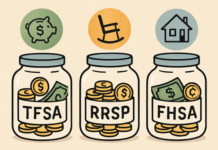
Stress is something we all experience, but our reaction to it can make all the difference. For some, stress is overwhelming and a trigger for setbacks. For others, stress is the catalyst for having plans in place, remaining focused, and growth. It’s a mindset shift where stress is not only a problem to contend with but a signal for adjustment and forward motion. Focused on the correct mindset, stress can motivate people to set firmer goals, develop routine, and build stamina. Neglected or inadversely dealt with, though, it can lead to burnout and poor judgment. Here we probe identifying stress as a helpful cue, shifting mindsets, what tools set calming concentration, ways to transform pressure to plans of action, and setting balance for daily living where stress is strategy not sabotage.
Stress as a Signal
Stress often gets a bad reputation, but it can actually be a useful signal. When your body feels stress, it is trying to tell you something important. It may be that you are taking on too much, missing rest, or facing a challenge that needs a new approach. By noticing these signs early, you can use stress as a guide instead of letting it overwhelm you. For example, a tight deadline at work might cause tension, but it can also highlight the need for better planning or asking for support. Stress shows where adjustments are needed, much like a warning light in a car. Ignoring it only makes problems worse, but paying attention gives you the chance to take action. Learning to see stress as a signal rather than a threat is the first step in turning it into strategy and preventing it from becoming sabotage.
Shifting Mindsets
The way you think about stress changes how it affects you. My perspective is that instead of fighting stress, you can learn to work with it. Stress can be reframed as energy that pushes you forward rather than something that holds you back. For instance, a student preparing for exams can turn nervous energy into focused study sessions rather than panic.
- View stress as a natural part of growth
- Break large tasks into smaller steps
- Practice self-talk that encourages progress
- Turn pressure into structured routines
When you treat stress as a partner, it becomes easier to manage. Even recovery programs like Shore Point detox in Massachusetts show how structure and guidance turn pressure into healing. This idea applies to everyday life as well. Stress is not always the enemy—it can be a signal that you care about your goals. By shifting your mindset, stress becomes a tool to organize actions and build resilience for the future.
Tools for Calm Focus
Many people ask how to stay calm when stress rises. Below are some common questions with clear answers to help guide the process.
What are the best tools to manage stress naturally?
Simple practices like deep breathing, daily walks, or short breaks from screens can make a big difference. These tools reset the mind and body, lowering stress levels without requiring complex routines.
How can I stay focused during stressful times?
Using planners, setting priorities, and breaking tasks into smaller steps help maintain focus. Stress feels lighter when you can see progress, even in small amounts. In some cases, fatigue has underlying causes beyond stress alone, which is why people also look for clear, informational resources on related topics, such as how to battle fatigue from taking birth control, to better understand how hormones and energy levels can interact with daily routines.
Do stress tools really work long term?
Yes, consistency matters. Tools like meditation apps or journaling are most effective when used daily. Over time, they train your mind to respond calmly instead of reacting with panic.
Calm focus comes from using the right tools at the right time. By practicing simple strategies, stress no longer feels like a burden but becomes a reminder to pause, reset, and move forward with clarity.
Turning Pressure to Plans
Stress can feel overwhelming, but quick strategies can transform it into motivation. With the right steps, pressure becomes a plan for progress. Here are some practical tips to get started.
- Write down tasks in a clear daily list
- Use time blocks to manage your schedule
- Add short breaks to recharge energy
- Practice positive self-talk to stay motivated
- Keep a journal to track wins and lessons
Each of these steps helps shift focus from stress to structure. When you turn pressure into a plan, you gain more control and reduce feelings of chaos. These tips make it easier to move forward with steady progress while keeping balance in daily life.
Building Daily Balance
A young professional used to have stress every day at the office. Long days and heavy loads made her exhausted and consider quitting. Instead of letting stress get the worst of her, however, she made the consideration to change things. She began each day with a short breathing practice, wrote out the three things most vital for the day, and allowed herself scheduled breaks. It was too simple initially, but week after week change became a reality. Concentrated attention expanded, mistakes decreased, and confidence was attained. Stress was still a factor, but it no longer had a grip on her.
70% of people report increased performance utilizing structured stress management methods
It unlocks the power of small, consistent habits in building confidence in oneself and taking away the negative power of stress. It also unlocks the power of not getting rid of stress but learning to use it through stable habits. It then turns stress from being a nemesis to a resource for growth and strength through the correct structuring.
Moving Ahead with Strength
Stress does not need to be the enemy. It can be reshaped into strategy that guides focus, energy, and growth. By treating stress as a signal and turning it into structured actions, life feels more balanced and purposeful. Each person has the chance to move forward stronger, not held back. Turning stress into strategy instead of sabotage is possible when daily choices build clarity and confidence. The time to begin is today, one small step at a time.
FAQs
1. How can I see stress as a helpful signal instead of a threat?
Reframe physical and emotional stress as a warning light indicating a need for adjustment—whether it’s better planning, rest, or seeking support. By paying attention early, you can use stress as a guide to identify challenges and take proactive action before it escalates into overwhelm or burnout.
2. What are the most effective daily tools for maintaining calm focus under pressure?
Simple, consistent practices work best: deep breathing exercises, scheduled short breaks, daily walks, and using planners to break tasks into smaller steps. Tools like meditation apps or journaling, when used daily, train your mind to respond with clarity instead of panic.
3. What are practical steps to turn overwhelming pressure into an actionable plan?
-
Write a clear daily task list, 2) Use time-blocking to structure your schedule, 3) Incorporate short breaks, 4) Practice positive self-talk, and 5) Keep a journal to track progress. This shifts focus from chaotic pressure to controlled, structured action.
4. How do I build long-term resilience and daily balance against stress?
Build resilience through small, consistent habits: start the day with a breathing practice, prioritize 3 key tasks, and schedule regular breaks. Consistency transforms these habits into automatic responses, turning stress from a disruptive force into a structured resource for growth and confidence.
5. Can changing my mindset about stress really improve my performance?
Yes. Viewing stress as energy for growth—rather than a threat—significantly improves focus and outcomes. Studies show that structured stress management can increase performance. By reframing stress as a natural part of achievement, you channel its energy into motivation and organized action.
Find a Home-Based Business to Start-Up >>> Hundreds of Business Listings.














































